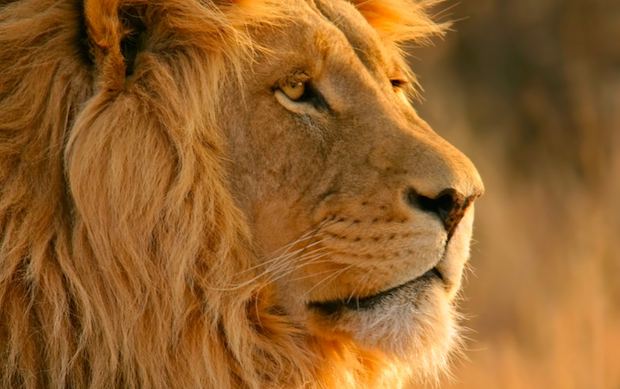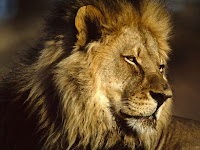Kita semua pasti pernah berfikir, 'mesin waktu itu bener ada atau tidak?'

nah, pada kesempatan kali ini di post ini, kita bakal menguak sedikit tentang mesin waktu.
Percobaan mesin waktu, pernah dilakukan pada tahun 1995. oleh Badan Riset Nuklir Eropa (CERN). Merupakan project terbesar yang pernah dilakukan oleh Manusia, dengan menggunakan peralatan paling rumit di dunia, serta memakan biaya lebih dari USD 10 Miliar dengan waktu penyelesaian lebih dari 14 tahun. Terletak 91 meter dibawah perbatasan Franco-Swiss dekat Geneva, Switzerland, mesin yg berbentuk terowongan sepanjang 27 kilometer ini dibangun oleh 10000 ilmuwan dan insinyur, dari lebih 100 negara, serta didukung oleh ratusan universitas dan laboratorium.
Tapi, hal tersebut masih belum membuktikan bahwa manusia dapat menjelajahi waktu. kenapa? mari kita bahas tentang Teori mesin waktu terlebih dahulu. ^_^
Teori Mesin Waktu
Sebelum lanjut ke teori mesin waktu yang ribet banget, kita akan bahas dulu tentang Miskonsepi tentang ruang dan waktu
Miskonsepi ruang dan waktu
Apakah pendapatmu tentang waktu?
"waktu selalu berjalan dengan kecepatan yang sama dimana2 di seluruh alam semesta ini"
Dan apakah pendapatmu tentang ruang?
"ruang ya begitu saja, 3 dimensil dan statis"
Jika pendapatmu kurang lebih sama dengan jawaban diatas, maka kamu salah. Ternyata ruang dan waktu itu sangat relatif. bisa berubah-ubah tergantung keadaannya. Buktinya?
- Gravitasi
Gravitasi bukan cuma sesuatu yang menarik kamu ke bumi. Gravitasi juga
Pernah nonton filmnya Jet Lee, "The One"?
Disana diceritakan, bahwa si Jet Lee ini punya banyak duplikat dirinya di semesta-semesta lain. Di semesta A dia jadi polisi, di semesta B dia jadi beach boy, dll. Ilmuwan percaya ini sangat mungkin terjadi.
Kenapa? inget partikel yang bisa menjadi 2 tadi? Bila partikel2 yang menyusun alam semesta ini bisa bercabang menjadi 2 sekaligus. Mungkin saja seluruh semesta kita ini bisa bercabang-cabang, bila ada cabang bagi kemungkinan yang akan terjadi.
Misalkan :
Beckham nendang freekick, jadi kemungkinannya : meleset ke kiri, meleset ke kanan, kena pager betis ditepis, ditangkep, goal, bisa juga dia tiba2 mati jantungan, dsb. Jumlah kemungkinannya tak terbatas, maka jika sebuah objek dihadapkan kepada kemungkinan yang banyak ini, maka semesta akan bercabang-cabang mengikuti kemungkinan-kemungkinan yang dapat terjadi.
Memang kedengerannya gila, tapi bila partikel bisa melakukannya, maka seluruh semesta yang terdiri dari partikel ini dapat melakukannya, khan?!
Balik lagi ke pertanyaan semula, apa yang terjadi kalo kamu membunuh kakek kamu sebelum dia ngelahirin bapak kamu? Inget multiverse tadi? Ini membuktikan kalo kamu kembali ke masa lalu dan mangubah sejarah. Apa yang sudah terjadi di semesta kamu gak akan berubah, kamu gak bakalan hilang, karena itu hanya akan membuat semesta baru, yang berbeda dengan semesta kamu sebelumnya.merupakan pembengkokkan ruang dan waktu yang dilakukan oleh benda bermassa, dan semakin besar massa suatu benda, semakin besar pula pembengkokkan ruang waktu yang dilakukannya.
- Muon
Muon adalah partikel yang hanya hidup selama 2/1 juta detik. Muon terbentuk saat cosmic ray terbentur atmosfir atas bumi. Karena Muon hidup hanya selama 2/1 juta detik, harusnya mereka hanya mampu berjalan sekitar beberapa ratus meter sebelum lenyap. Tapi kenyataanya, banyak Muon ditemukan di permukaan bumi.
Kenapa bisa begitu??
Karena kecepatan mempengaruhi waktu. Semakin cepat suatu benda bergerak, semakin lambat waktu berjalan baginya. Ini yang disebut dengan dilasi waktu. Inilah kenapa si Muon yang hidup selama 2/1 juta sekon mampu sampai ke permukaan bumi, karena 2/1 juta sekon bagi dia = beberapa sekon bagi kita.
Pergi ke masa depan
Bagaimana cara pergi ke masa depan?
- Dengan kecepatan
Inget sama si Muon? Dia mampu ‘pergi ke masa depan’, karena ia memiliki kecepatan yang luar biasa.
Jadi Teorinya Begini :
"Kita bergerak dengan kecepatan mendekati kecepatan cahaya, supaya waktu berjalan lebih lambat bagi kita, dan begitu kita kembali ke kecepatan normal, maka bumi sudah futuristik githu".
Hanya saja ada masalah mengenai ini :
Semakin cepat suatu benda bermassa bergerak, semakin berat dirinya. Dan semakin berat sesuatu, semakin besar tenaga yang diperlukan untuk menggerakkanya. Maka, untuk menggerakkan kita mendekati kecepatan cahaya, diperlukan energi yang luar biasa besar, dan seluruh energi di bumi pun gak bakalan cukup.
- Dengan Gravitasi
Diatas udah dijelasin tentang pengaruh gravitasi terhadap ruang, bukan terhadap waktu. Tapi, karena ruang dan waktu terikat erat, maka perubahan di ruang juga berpengaruh terhadap waktu. Maka, semakin besar suatu daerah terbengkokkan ruangnya, waktunya akan berjalan semakin lamban.
Contoh :
Karena semakin dekat kamu ke inti bumi, semakin besar pula gravitasinya, dan sebaliknya. Waktu bagi orang yang ada di permukaan bumi, lebih lambat bagi orang yang ada di lantai 100 gedung bertingkat. (Walaupun perbedaan jarak waktunya sangat kecil sekali).
Jadi Teorinya Begini :
"Kita pergi ke tempat yang massanya lebih besar dari bumi, supaya waktu berjalan lambat bagi kita dan cepet bagi bumi, sehingga pas kita balik ke bumi, bumi sudah futusitik."
Ok, apa coba benda yg massanya jauh lebih gede dari bumi, yang memungkinkan perjalanan waktu??? "Black Hole". Black Hole adalah benda yg bermassa luar biasa dan sangat padat, tentu saja gravitasinya gila-gilaan. Dan gravitasi yang gila, tentu saja bakal memperlambat waktu dengan gila. (bahkan di pusat black hole/singularitas, waktu berhenti sangking kuatnya gravitasinya).
Tapi, seperti menjelajahi waktu dengan kecepatan, hal ini juga punya masalah. Masalah yang sangat besar : Kamu Bakal Mati ! Begitu kamu melewati event horizon, gak ada
cara bagi kamu untuk keluar, maka kamu bakal terhisap ke sigularitas, dan dihancurkan sampai ketiadaan.
- Time Paradox
Gimana kalo kita udah punya mesin waktu yang benar-benar bekerja? Apakah menggunakannya bakal membuat kekacauan di ruang waktu?
Karena semua hal yg kita lihat ini terbuat dari atom, maka mendingan kita liat dulu apa yg terjadi di dunia atom. Sebenernya, partikel2 atom itu penjelajah waktu secara alami. Ini adalah percobaan 2 celah, sebuah partikel (elektron) ditembakan melalui sebuah celah, lalu dari celah tersebut dibuat lagi 2 celah dibelakangnya.
Harusnya khan partikel memilih salah satu dari 2 celah tersebut untuk dilalui? Tapi anehnya nggak! Ternyata 1 partikel dapat melalui 2 celah!! Ini berarti sebuah partikel dapat berada di 2 tempat sekaligus!? Dan karena kita terdiri dari partikel, kita mungkin juga bisa berada di 2 tempat secara bersamaan. Hal ini membuat ilmuwan memikirkan tentang teori gila lainnya, "Multiverse".
- Multiverse
Pernah nonton filmnya Jet Lee, "The One"?
Disana diceritakan, bahwa si Jet Lee ini punya banyak duplikat dirinya di semesta-semesta lain. Di semesta A dia jadi polisi, di semesta B dia jadi beach boy, dll. Ilmuwan percaya ini sangat mungkin terjadi.
Kenapa? inget partikel yang bisa menjadi 2 tadi? Bila partikel2 yang menyusun alam semesta ini bisa bercabang menjadi 2 sekaligus. Mungkin saja seluruh semesta kita ini bisa bercabang-cabang, bila ada cabang bagi kemungkinan yang akan terjadi.
Misalkan :
Beckham nendang freekick, jadi kemungkinannya : meleset ke kiri, meleset ke kanan, kena pager betis ditepis, ditangkep, goal, bisa juga dia tiba2 mati jantungan, dsb. Jumlah kemungkinannya tak terbatas, maka jika sebuah objek dihadapkan kepada kemungkinan yang banyak ini, maka semesta akan bercabang-cabang mengikuti kemungkinan-kemungkinan yang dapat terjadi.
Memang kedengerannya gila, tapi bila partikel bisa melakukannya, maka seluruh semesta yang terdiri dari partikel ini dapat melakukannya, khan?!
Balik lagi ke pertanyaan semula, apa yang terjadi kalo kamu membunuh kakek kamu sebelum dia ngelahirin bapak kamu? Inget multiverse tadi? Ini membuktikan kalo kamu kembali ke masa lalu dan mangubah sejarah.
Apa yang sudah terjadi di semesta kamu gak akan berubah, kamu gak bakalan hilang, karena itu hanya akan membuat semesta baru, yang berbeda dengan semesta kamu sebelumnya.




















































